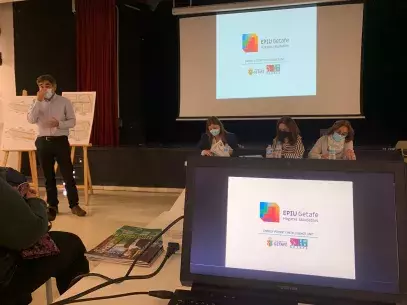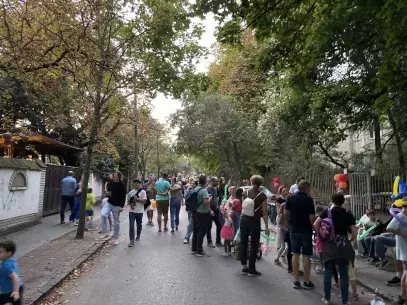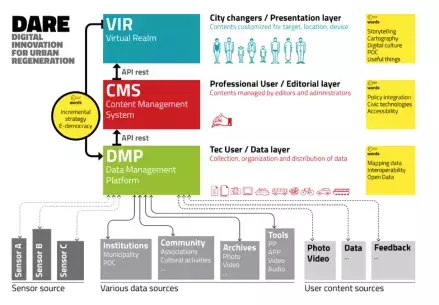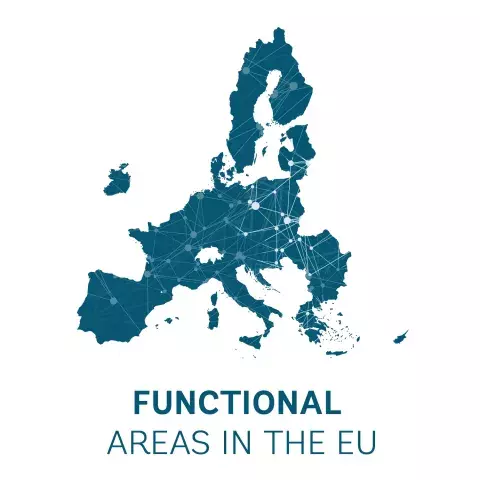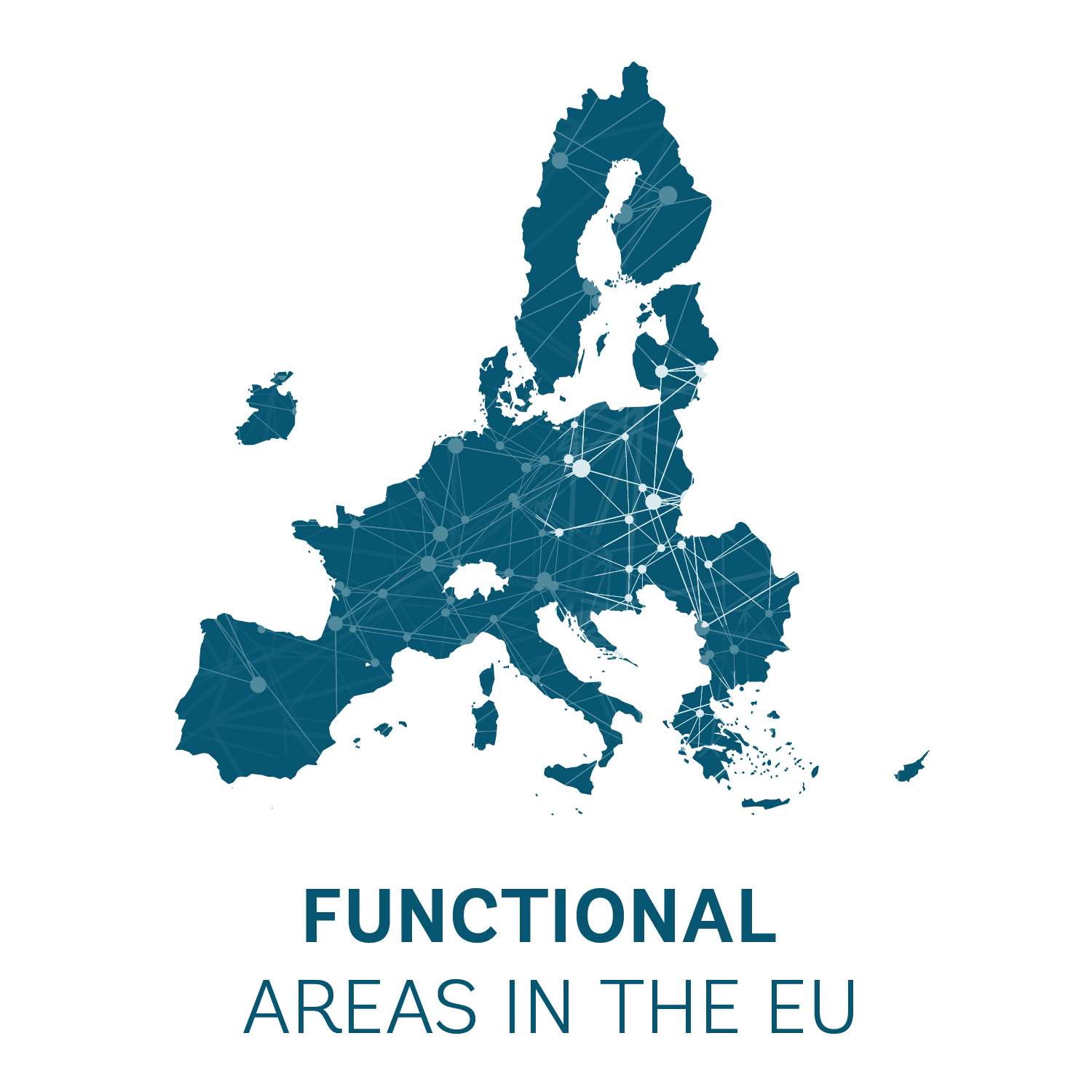
CROSS-BORDER COOPERATION | GREEN MOBILITY Challenge One of the main challenges addressed was the need to create a green mobility corridor uniting the localities across the border. SolutionCross-border cycling lane: Oradea – Berettyoujfalu Building on its geographic positioning next to the border with Hungary, Oradea MA has been actively seeking to implement additional projects on the metropolitan area level in a cross-border context. Through the Romania-Hungary Cross-Border Cooperation Program 2007-2013 and the European Grouping of Territorial Cooperation framework, the Oradea MA was able to take over the role of a Managing Authority and implement cross-border public procurement. One of the flagship cross-border projects was the construction of a cross-border bicycle lane of 3.5 km between Oradea and the Hungarian locality of Berettyoujfalu, along the E60 road (42 road – Hungary), finalized in 2013. The main benefits of the project consist in promoting green mobility and reducing environmental polution, facilitating commuting, fostering cross-border toursim and offering a new leisure activity for residents, as well as reducing the number of road accidents involving cyclists. The bike lane project involved four localities in Hungary: Berettyoujfalu, Mezőptered, Biharkeresztes, Ártánd and two in Romania (Bors and Oradea) and was financed through the Romania-Hungary Cross-Border Cooperation Program. The project leader was the municipality of Berettyoujfalu, while Oradea MA elaborated the feasibility studies and technical project. It is worth noting that within this cross-border project, significant savings were made as a result of the procurement procedures, as a result of competition among applicants, allowing for the extension of the cycling lanes in Oradea from an initial 8 km to 23 km. Projects to improve cycling connectivity across the border are also implemented outside the Metropolitan Area – an example is the WeBike INTER-REG project (ROHU 140), connecting the localities of Sarkad (Hungary), Salonta and Madaras (Romania). This will results in the extension by 8.78 km of existing bicycle routes between Salonta and Békéscsaba. It is worth highlighting that for all localities involved, facilitating safe bicycle transport is a priority, since there is a clear preference of residents for alternative means of transport. Cross-border approaches to improving public transport: Oradea – Biharkeresztes, Oradea – Debrecen In terms of public transport services, the Oradea Local Public Transport Company operates regular bus transport to Biharkeresztes (Hungary). The route consists of 8 bus stops (2 in the rural area of the Oradea Metropolitan Area and 4 on the territory of Oradea). At the same time, cross-border collaboration for improving and extending public transport has been a priority for the Oradea Metropolitan Area. A successful INTER-REG project was implemented between 2019-2021, aimed at improving the public transport service in the cross-border area, connecting the Oradea and Debrecen urban poles. The lead of the project was the Oradea Local Public Transport Company, in partnership with the TRANSREGIO Intercommunity Development Association (Romania) and the Debrecen Transport Company (Hungary). As part of the objective to modernize the public transport fleet, the Oradea Local Public Transport company purchased its first hybrid bus, along with 6 other new Mercedes Euro 6 buses, and also elaborated a Transport Development Plan, a Passengers Traffic Flow Study and an Automatic Vehicle Location and passengers information system at the level of Oradea. The digitalization of transport services was a key component of the project. The TRANSREGIO association developed a cross-border public transport route planner (mobile application) at the metropolitan level, giving passengers the possibility to schedule their trips in the two cities. The app is available in Romanian, Hungarian and English on both Android and iOS platforms. Besides extending their fleet, the Hungarian partners developed an e-ticketing system, ensuring passengers an easy payment experience, as well as smart bus stops with real time information panels and automatic tickets vending machines. The full list of activities of the ROHU-390 project is available in the Project description, available at: https://interreg-rohu.eu/wp-content/uploads/2021/04/ROHU-390-EN.pdf) Photos: https://interreg-rohu.eu/wp-content/uploads/2021/04/ROHU-390-EN.pdf https://www.facebook.com/InterregRomaniaHungary/posts/news-from-project-rohu-390-transborder-the-first-hybrid-bus-in-oradeainterregroh/1476592769203104/ On the Oradea-Debrecen route, public transport options are limited to private mini-bus shuttles and a subpoptimal railway connection, however the extensive collaboration framework through transborder projects provides an excellent base for new mobility projects. Considering that there is proven demand for cross-border public transport (based on data from private operators), a rapid railway service between Debrecen and Oradea is planned, with the aim to provide an attractive alternative to personal cars. According to a Case study on the Rail link Debrecen (Hungary) –Oradea (Romania) published in 2022 by the European Commission, non-competitive timetables and long journey times are the main weakness of the existing connections. The journey time between Oradea and Debrecen is very long, 2 hours 47 minutes (also because of the long waiting time on the border, as Romania is not yet part of the Schengen Area), short-distance tickets are expensive and the timing is not optimal, as the current service runs at night. Therefore, in the next programming period, an improved rapid train connection is planned and included in the Integrated Development Strategy of the Oradea Metropolitan Area. Other cross-border projects included the analysis and collection of mobility data starting from 2009, which have formed the basis for the current road infrastructure projects at the metropolitan level. The project for developing the ring-road system at the metropolitan level ring has been initiatied as part of a cross-border project (INFRASTRAT), back in 2009-2010. Through this project, two pre-feasiblity studies have resulted, one for the Oradea MA and one for Debrecen. Another project financed through the Romania-Hungary Cross-Border Cooperation Program 2007-2013 (CROSS-TRANS) generated in 2012 the elaboration of mobility studies and transport development plans for the Metropolitan Area. In 2013, through the INTER-REG Southeast Europe, a Sustainable Urban Mobility Plan was developed, making it the first such plan elaborated in Romania. Other best practices Tourism, culture and brandingHarnessing the Untapped Potential: The All-Season Tourism Masterplan for Jiu ValleyJiu Valley & Jiu ConurbationContinue reading Best Practices | Urban regenerationUrban-rural linkages: regeneration of public spaces in the Cluj Metropolitan AreaCluj-Napoca Metropolitan AreaContinue reading Governance | Strategic planningIntegrated Development Strategy of Brno Metropolitan AreaBrno Metropolitan AreaContinue reading 12Next
About this resource
In 2021, the European Commission launched a pilot project to improve functional area approaches in the EU and has partnered with the World Bank to implement this initiative. As part of the project, the project team collaborated with 12 functional areas from seven EU countries, providing them with tailored technical support and assistance: Zagreb Urban Agglomeration (Croatia), Brno Metropolitan Area (Czech Republic), West Athens (Greece), Lake Balaton Area (Hungary), Kalisz-Ostrów Agglomeration, Kraków Metropolitan Area (Poland), Jiu Valley and Jiu Conurbation Functional Area, Caraș-Timiș Functional Area, Cluj Metropolitan Area, Oradea Metropolitan Area, West Ialomița Functional Area (Romania), and Trenčín Functional Area (Slovakia).
Similar content
